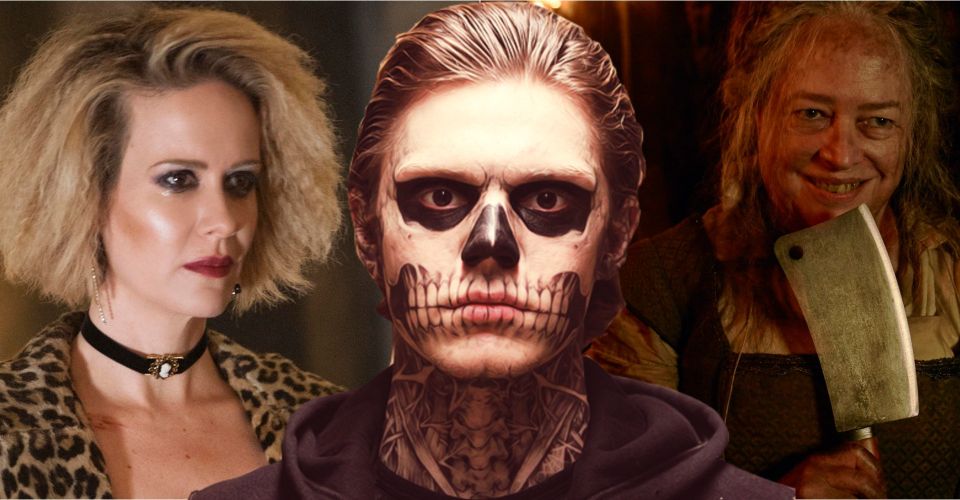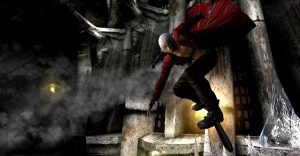How Ghosts Work In American Horror Story, Explained (All Seasons)

Ghosts are a vital part of American Horror Story. As the show has been running for nearly a decade, it’s established a thorough set of rules as to what ghosts can and cannot do on the horror anthology series. But sometimes, of course, those rules are bent.
AHS‘ ghost rules were laid down in the show’s first season, dubbed Murder House after its debut. That season followed the doomed Harmon family as they moved into a new home. They quickly realized that they were sharing their home with the vengeful spirits of those who had died there — and by the season’s end, the Harmon family ended up joining the ranks.
On AHS: Murder House, ghosts killed, engaged in intercourse, interacted with humans, and more. The way they behaved on the show set the precedence for the ghostly characters that followed in subsequent seasons of AHS. But naturally, the rules were altered over the years to fit the specific story of each season that featured ghosts. Here’s a look at the origin of AHS‘s ghost rules and how they evolved over the years.
How Ghosts Work In Every Season Of American Horror Story

First and foremost, anyone who dies on a specific property remains trapped on that property after death. That’s the reason the titular Murder House was filled with so many ghosts — it was the scene for grisly murders on more than one occasion throughout the years. AHS: Hotel followed the same rules, as anyone unlucky enough to die on the grounds of the Hotel Cortez remained trapped there as a ghost. AHS: Roanoake and AHS: 1984 also featured ghosts that followed the same rule.
Ghosts also remain hidden until they want to be seen. This trick of theirs is commonly utilized throughout multiple seasons of AHS. But they can be summoned by highly skilled mediums. The most prominent of which throughout the series is Billie Dean Howard, who appears as a recurring character in the show. AHS: Roanoke‘s Cricket (Leslie Jordan) also has the same ability. On the same note, mediums also have the power to banish ghosts by uttering one powerful word — “Croatoan.” But the ability to use other witchcraft on ghosts still remains a little uncertain.
Ghosts in American Horror Story also remain in the same mental state as when they died. Take Hayden (Kate Mara) on AHS: Murder House: She was having an affair with Ben and went to confront him. She’s full of rage and insists that Ben supports her and her unborn child. Ben eventually arranges to have her killed, but she remains in that vengeful state of mind after death. The same goes for Sally in AHS: Hotel. It’s implied that she was emotionally disturbed in her human life, and she remained so after death. This may be the most compelling aspect of AHS‘ ghosts. By giving them such strong emotional capabilities, it allows for them to partake in the show’s heavy dramatic moments.
One thing the spirits can change, however, is their appearance. AHS has established that ghosts often suffer from some kind of amnesia before they accept their deaths. But once they finally come to terms with their fate, the ghosts can have some twisted fun with it. Elizabeth Short was brutally murdered before the events of Murder House. She manifests herself to appear as a collection of butcher body parts in order to scare the newest owner of the house. In Hotel, Sarah Paulson’s Sally makes her teeth rot and eyes bleed for the very same reason.
Additionally, AHS has laid down other lesser rules for ghosts as well. Hotel and Roanoke show that ghosts cannot be captured on film — they just appear as static. The horror series has also shown ghosts partaking in sexual intercourse with humans. As ghosts can shapeshift, they can also trick the person in question to believe they are someone else during sex. While AHS‘ rules place some limitations on ghosts, they also allow for the spirits to be truly terrifying.
Every Time American Horror Story’s Ghost Rules Changed

Since AHS has been running for nearly ten seasons, the show’s rules related to ghosts change on occasion. It’s both a typical and inevitable downfall of long-running series — ideas established early on must be changed or forgotten in order to accommodate certain storylines. In Murder House, the show clearly states that ghosts are trapped in the location of their death, but can leave the grounds on one night each year — Halloween. The show almost immediately makes an exception for Tate. Murder House‘s biggest mystery was probably the identity of a man wearing a rubber suit. The show provides a little background for the suit’s origins. A previous owner purchased the suit, but Ben eventually found it and threw it away. His garbage can was outside of his property line. Tate was eventually revealed to be the Rubber Man, which was a huge twist. But as he was a ghost all along, how did he manage to get his hands on the suit without leaving the property? It’s a minor plot hole but could have easily been avoided by making that discovery occur on Halloween.
An aspect of that rule was also bent for AHS: Roanoake. The sixth season of the show places a heavy focus on the Blood Moon, as it is said that ghosts can walk the earth during that time period. That completely contradicts Murder House‘s rules about Halloween. Frankly, the idea of a Blood Moon is more unconventionally scary than the typical Halloween. But unfortunately, that’s the rule that AHS initially laid down and should’ve stuck with.
One of the most glaring loopholes related to AHS‘s rules is who becomes a ghost and why. Of every AHS season, ghosts are most prominently featured on Murder House and Hotel; both stories explicitly mention that anyone unfortunate enough to die on the grounds of the murder house or the Hotel Cortez remain trapped there for all eternity as a ghost. But as the audience sees, that’s not always true. There are multiple deaths in the Hotel Cortez that never result in ghosts (at least not ones the audience sees). Ultimately, this loophole doesn’t have a huge impact on the show, as they tend to stick to the rule for major characters, and it’s possible that the ghosts exist but are never shown. But for this being American Horror Story‘s biggest ghostly loophole, the show’s done pretty well at keeping up with a decade’s worth of ghost rules. Audiences will be sure to keep on any future appearances from ghosts to see if they stick to their previously established ghosts.
About The Author

















